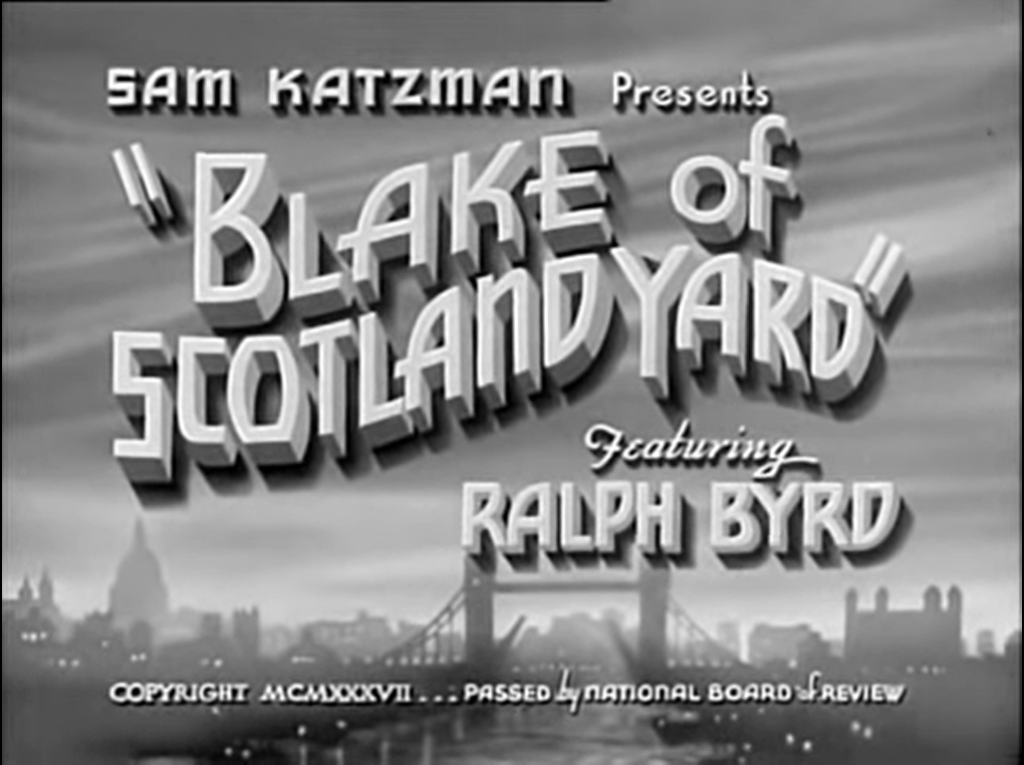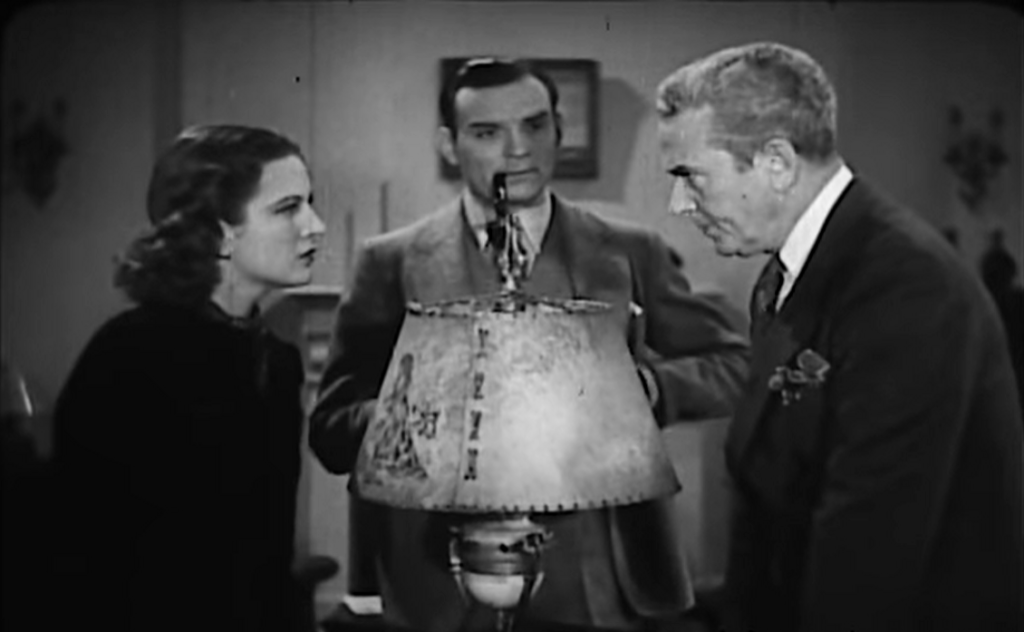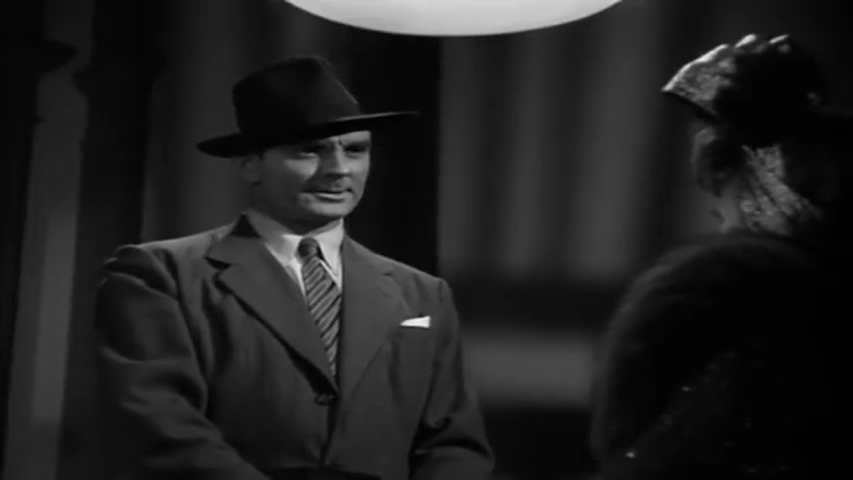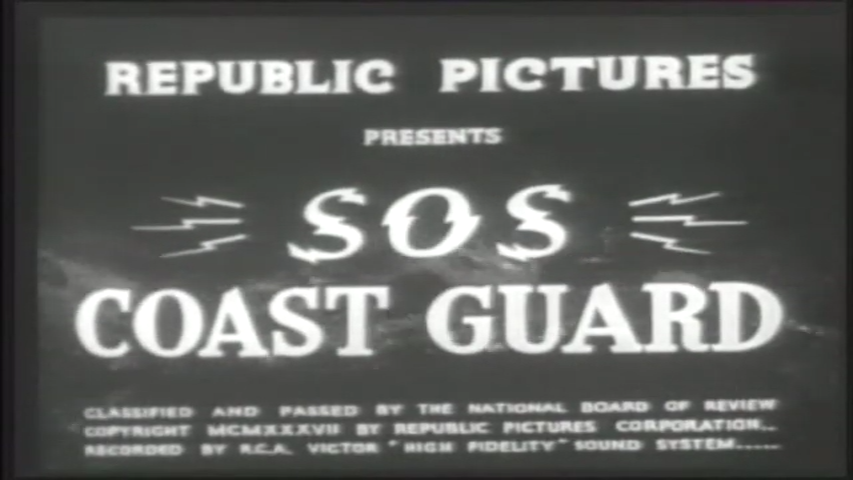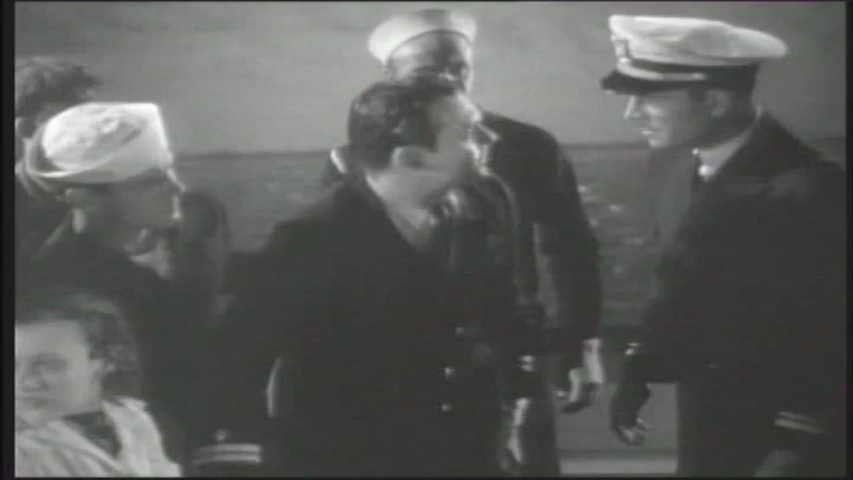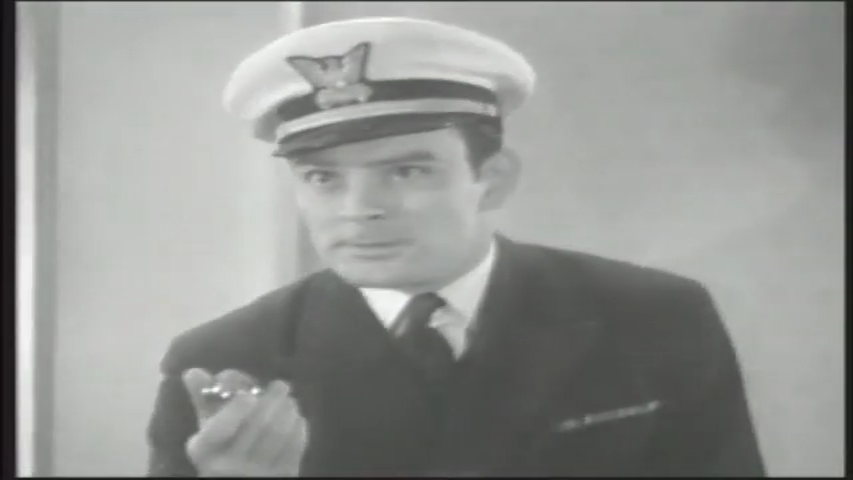-
#417 – Blake of Scotland Yard (1937)
Blake of Scotland Yard (1937)
Film review #417
Director: Robert F. Hill
SYNOPSIS: Sir James Blake is unveiling a new invention to the League of Nations which will ensure world peace, however, the presentation is interrupted by a criminal mastermind known only as “The Scorpion,” who wishes to steal the invention for his own nefarious uses. Jerry Sheehan, an American who has helped create the invention along with Blake’s niece Hope, works with Blake, Hope and their friends to find the invention and uncover The Scorpion’s true identity.
THOUGHTS/ANALYSIS: Blake of Scotland Yard is a 1937 movie serial composed of fifteen chapters released by Victory Pictures. Interestingly enough, a serial of the same name was released ten years prior by Universal Pictures, directed by the same director as this one. It is unfortunately a lost serial and no footage seemingly exists, but from what I can tell, it was quite different from this one, and none of the characters are the same, meaning that this serial is just capitalising on the name of it’s predecessor and it’s sequel, which is quite an odd move considering that ten years is a large gap in a time when there would have been no way to re-watch these serials unless they were re-run in theatres. maybe they bet on adults recognising the name and taking their kids to go see it. Anyway, the serial starts off with Sir James Blake, a retired inspector at Scotland Yard, unveiling an invention he has made along with his niece Hope and their friend Jerry. They are presenting it to the representatives of the league of Nations as a device that can target and destroy battleships from over one hundred miles away. They plan to donate it to the League of Nations to ensure world peace; which is an interesting way of creating peace by giving countries the unlimited capacity to blow each other up. What do they call this miraculous device? a “death ray.” Yes, the architect of peace named the death ray, will surely stop all wars. Nevertheless, the demonstration is interrupted as a criminal mastermind known as “The Scorpion” shows up with his goons and steals the device, hoping to sell it to a foreign power. This sets up the typical serial premise of the heroes foiling the criminal’s various schemes while attempting to unmask him, and for the most part it really falls into the standard serial format without exception.
I suppose what makes the serial unique is that it is set in England, which is different from the usual serials set in unnamed U.S. cities. The trouble is that it is obviously made in the U.S. with American actors, and none of them really make an effort to use an English accent. It sometimes sound likes they’re trying to put on an accent, but it definitely doesn’t sound English. The only character who has an excuse is Ralph Byrd’s character Jerry, who is meant to be American, and who also seems to try and sound a little English. This is Byrd’s first serial appearance, from which he would go on to star in S.O.S. Coast Guard and Dick Tracy in the same year, eventually setting him up to play Tracy in various serials, feature films and TV shows until his death in 1954. One of the running jokes (if you can call it a joke) is that Hope’s kid brother Bobby occasionally uses American slang and phrases, which he or Jerry have to explain to the rest. In one scene, Jerry jokingly chastises Bobby about needing to speak “proper English,” which is completely bizarre considering Jerry is the American, and everybody else also doesn’t seem to speak “proper” English. Bobby is also probably the only character who makes a more significant effort to speak an English accent. Despite the title, there’s not really much in the way of police or detective work, and we only see Scotland Yard itself in one scene. As mentioned, it seems the serial is relying on the name for recognition only. The Scorpion as the villain always walks around with a hunched back, and always covers his face with a claw on his hand (he also wears a mask as well, but we never really see it because of the aforementioned claw). Why the claw? To fit with the “Scorpion” name I guess? Why is he always covering his face with
The action is split between a number of locations which adds a small amount of variety. Most of the action is set in Blake’s stately home, which has a number of secret passageways, underground tunnels and spy-holes for all sorts of tricks to play out. There is also the gang’s hideout in London, where we see stock footage of the London skyline and a street scene which I guess looks London-esque. They could have definitely utilised it more though to give the serial a unique setting. There’s also a good chunk of the serial that takes place in Paris, specifically a café and a hotel. These scenes often feel completely pointless, consisting of some odd dancing by a couple who hate each other, who are also spies…or something like that? it’s really difficult to follow, and frankly very boring. There’s no real sense of it being in Paris either, apart from one guy wears a stripy shirt and another woman a beret in typical style.I think they’re also trying to put on French accents, which is about as successful as the attempts to do English ones. There’s a lot about this serial which just pads out the time, and offers very little to the story (of which there is little anyway). A seventy-minute feature film version was released along with the five-hour serial, which I assume was able to cut out almost all of these pointless scenes, and shows just how much of the serial was inconsequential.
Despite the variety of locations, the sets feel very empty and dull, with no real character to them. There’s not really much action as in other serials, as most of the chapters revolve around following henchmen, or devising a trap to capture a henchman. While most serials throw in a fistfight and vehicle chase almost every chapter, this one doesn’t, and unfortunately doesn’t offer anything interesting to replace it. The identity of The Scorpion when it is revealed is a surprise, but doesn’t really have any ramifications. One of the most distracting things about the serial is the lack of background music. It makes whole scenes completely lifeless, especially the fight scenes, which lack any sort of energy. Overall, as you can probably guess, Blake of Scotland Yard is not a very good serial. Considering we were getting serials like Flash Gordon at around the same time, there’s no way a barebones serial like this could offer anything exciting. The plot is very typical of the serial format, but manages to make it needlessly complicated and difficult to follow across all the locations and the spying, doppelgangers and betrayals that obfuscate the flow of the story. The setting in an English stately home is novel, but undone by sparse sets and lack of appropriate accents. Byrd as the lead gives a charismatic and charming performance, but the rest of the cast are dull and without merit, and Byrd shines much more in his role as Dick Tracy. Give this one a miss, you are not missing much.
-
#395 – Dick Tracy’s Dilemma (1947)
Dick Tracy’s Dilemma (1947)
Film review #395
Director: John Rawlins
SYNOPSIS: A robbery at a vault full of furs also leaves one person dead and a suspicious insurance claim. Homicide detective Dick Tracy and his partner Pat Patton are put on the case where they investigate the involvement of a man known only as “the Claw”…
THOUGHTS/ANALYSIS: Dick Tracy’s Dilemma is a 1947 film and the third Dick Tracy feature film. The film opens up with a robbery being committed on a safe at a storage facility. The watchman attempts to intervene, but later when it is found that he is missing, homicide detective Dick Tracy and his partner Pat Patton are put on the case and find the safe, which was supposed to be full of imported furs, empty. Tracy investigates the involvement of the vault’s insurance company, as well as the involvement of a man known only as “The Claw”. The story is very similar to the other two films of the series, with a murder investigation being the primary thread running through the film, with lots of little investigations and twists tying into it. The runtime of sixty minutes is again similar to its predecessors, which keeps everything streamlined and without unnecessary filler. It is well paced with a variety of locations and colourful characters to keep things interesting.
The most notable element of this film compared to the others is the return of Ralph Byrd to the role of Dick Tracy in place of Morgan Conway from the first two. Byrd starred as Tracy in the four movie serials released between 1941 and 1947, and his return is very much welcome. While Conway probably looked more like the Dick Tracy from the comics, Byrd has a much more likeable charm and personality, and just seems to fit in better with the other cast members. The rest of the cast also has plenty of personality, and embody the type of comic book characters of the original format, with the ridiculously cartoony names and all. Tess Trueheart as Tracy’s girlfriend returns, and is a better fit with Byrd’s Tracy, as she always looked far too young to be Conway Tracy’s girlfriend. The English theatre actor Vitamin (see what I mean about cartoony names?) as some comic relief and eccentricity, along with the accident prone Pat Patton. The Claw himself is also fairly menacing, but is very similar to the other villains in the earlier films. The film balances the gritty crime-noir aesthetics with high contrast lighting and dramatic angles with these comic-esque characters that would appeal to a younger audience. Again, the film balances these two genres very well without undermining one another.
There is not much else to say about this film that I didn’t mention in my reviews of the earlier ones. Dick Tracy’s Dilemma, following its predecessors, has hit a sweet spot balancing crime-noir with a comic book style that can appeal to a wide range of viewers (which is what you want in a feature film). It doesn’t change much from the previous films, and sticks very much to the sixty minute runtime, but again it doesn’t need to really innovate if it already has a successful formula. The return of Ralph Byrd to the role of Dick Tracy is certainly the only tweak the formula needed to make. Another solid entry in the series, even if it lacks anything innovative.
-
#390 – S.O.S. Coast Guard (1937)
S.O.S. Coast Guard (1937)
Film review #390
SYNOPSIS: The renegade scientist Boroff has invented a disintegrator gas that unsurprisingly disintegrates everything around it when released. Boroff’s ship gets in trouble at sea, leading the coast guard to mount a rescue. However, he is recognised by some reporters along for the ride as a wanted criminal and they give chase as Boroff tries to escape. When one of the coast guards is killed as Boroff escapes, his brother Lt. Terry Kent, also a member of the coast guard, swears revenge and he and the reporters Jean Norton and Snapper McGee attempt to unravel the mystery surrounding Boroff and to put a stop to his evil schemes.
THOUGHTS/ANALYSIS: S.O.S. Coast Guard is a 1937 movie serial by Republic Pictures. The serial starts off with a ship in distress off the coast and the coast guard being deployed. Jean Norman, a newspaper reporter and Snappy McGee, a photographer for the newspaper, recognise the man rescued from the ship as Boroff, a wanted scientist who has been developing deadly weapons to sell to foreign powers. The coast guard give chase, which ends up in the death of one of them, Ensign Jim Kent. His brother, Lt. Terry Kent, who is also a member of the coast guard, swears revenge, and attempts to track down Boroff with the help of Jane and Snapper. The serial unfolds very much like every other serial, so there shouldn’t be no surprise with the cliffhangers, chases and fist fights that fill the chapters. The setting of the coast guard does make it stand out a little, with the scenes at sea and on the ships being well executed. There’s enough variety and a tangible thread of story all the way throughout to make it a watchable serial, but again the format does show its age, and if you’ve seen one you’ve more or less seen them all. The format meant that a lot of content could be produced quickly and at a small cost, but nothing original or innovative was attempted outside of those original constraints.
The characters are one of the noteworthy aspects of the serial, with some recognisable faces amongst the cast. The character themselves are pretty typical: you have the young, courageous American male for the lead, one female character, a mad scientist villain, and a comic relief character. Lt. Terry Kent is the typical lead, this time played by Ralph Byrd, who would be recognisable from the successful Dick Tracy serial that was released earlier in the same year. His character wears a hat most of the time so he distinguishes himself from Tracy enough that you wouldn’t be distracted by the similarities, but Byrd’s appearance in this serial definitely rides the success that Dick Tracy had. The villain is played by famous horror actor Bela Lugosi, who is not in a horror film role because of the ban on making horror movies that was put into effect between 1936 and 1938. The name of his character Boroff is more than likely a reference to fellow horror movie actor and Lugosi’s somewhat rival Boris Karloff. The character of Snappy McGee is very similar to the character of Mike McGurk in the Dick Tracy serial, and I was quite surprised to see it wasn’t the same actor, as they are very similar in terms of looks and mannerisms. Jean Norman’s actress Maxine Doyle also went on to marry the director of this serial (William Witney), so all round an interesting bit of trivia from the casting, even though their characters aren’t as stand-out.
Being set at sea for a decent amount of the runtime, there’s a lot of scenes on the ocean which are all executed fairly well. In the opening chapter we see Boroff’s ship the Carfax caught in a storm, and the set definitely looks like a boat in a storm, with huge waves soaking the set and the actors. There’s some decent effects and props which also breathe some life into the predictable storyline. While setting a serial in the coast guards might not sound as thrilling as a Flash Gordon serial or the like, it still manages a decent story with a good cast. If you liked the Dick Tracy serial, no doubt you would have sought this serial out as well.

